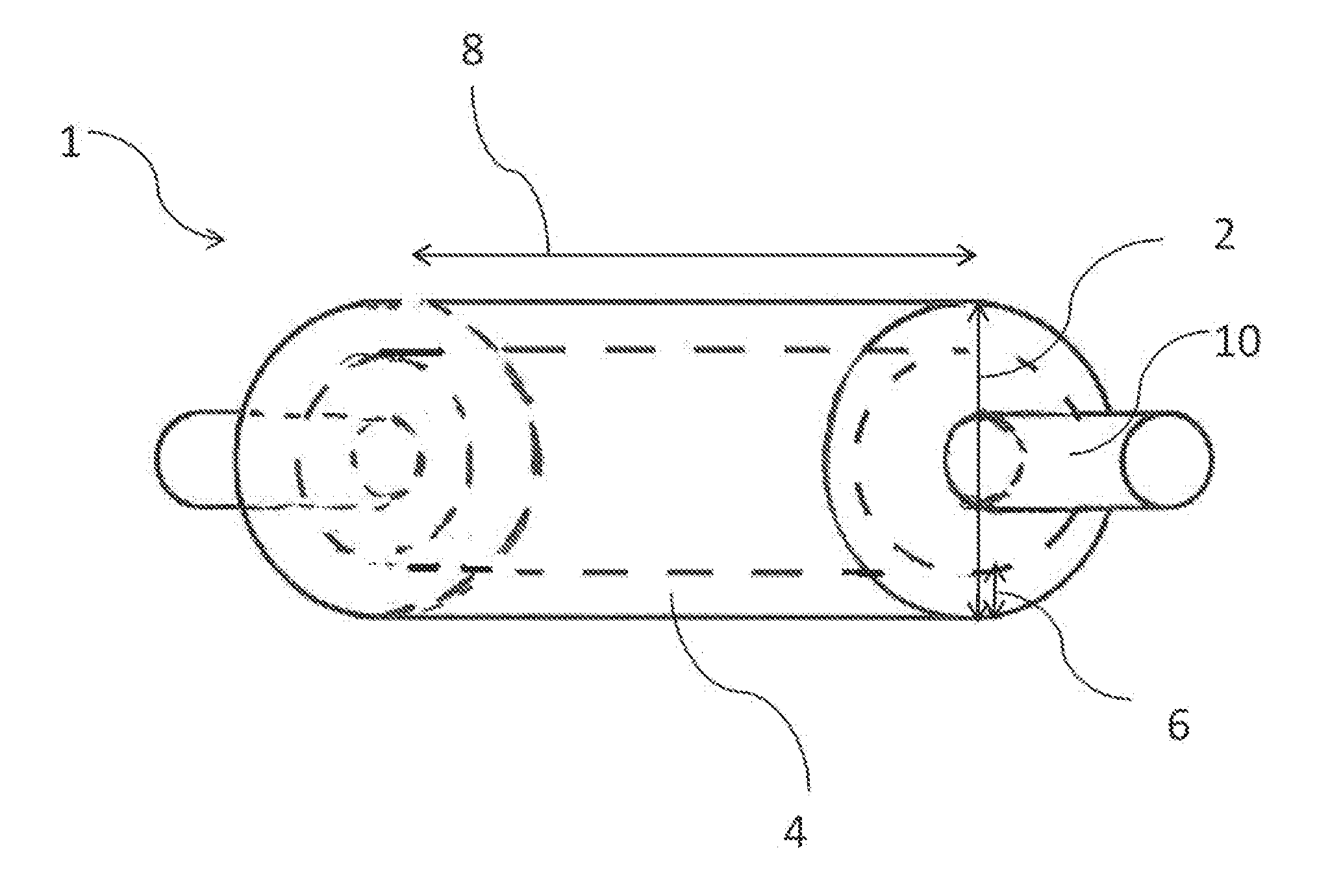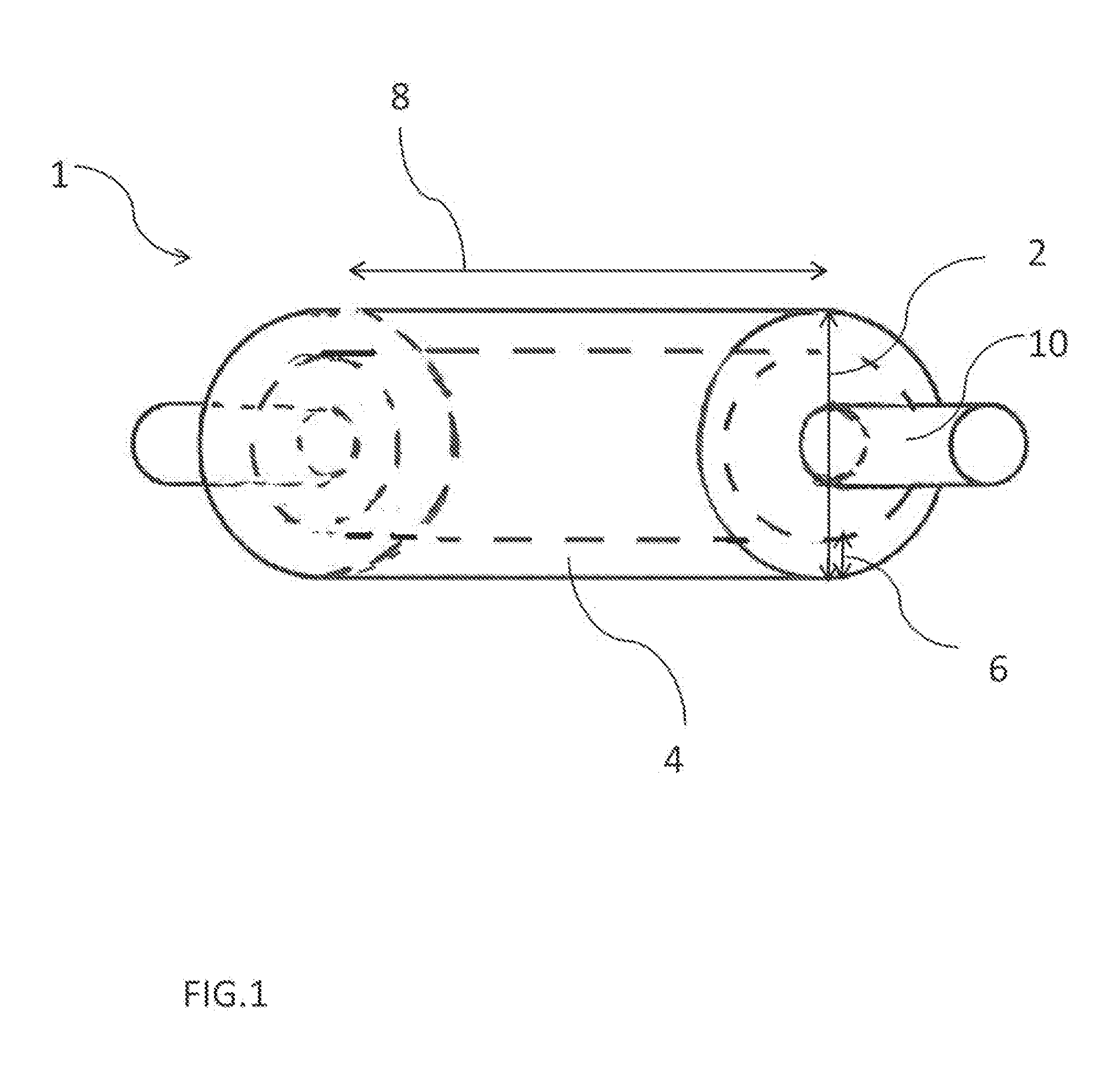Forged roll meeting the requirements of the cold rolling industry and a method for production of such a roll
a cold rolling industry and forged roll technology, applied in the field of forged rolls and to production of forged rolls, can solve the problems of insufficient disclosure of parameters and properties of prior art pieces, and become more and more questionable, and achieve the effects of low friction coefficient, no dust pollution, and high roughness retention
- Summary
- Abstract
- Description
- Claims
- Application Information
AI Technical Summary
Benefits of technology
Problems solved by technology
Method used
Image
Examples
example 1
[0322]This example shows the effect on the microstructure in the roll according to the invention when using a solidification rate higher than 15° C. / min during formation of the ingot 34 according to the invention.
[0323]FIG. 5A-B show an example of a microstructure of INGOT 1 according to the invention which is made using a process with a solidification rate in average 50° C. / min (on 90 mm depth of the ingot) while cooling the ingot from 1400° C. to 1200° C. The eutectic cells in the example INGOT 1 according to the invention are small (940, 942), FIG. 5B shows the fragmented network with to an open eutectic network. See also FIG. 8 for the different solidification intervals in the different parts of the ingot during the solidification showing the temperature rate in the core 82, the mid-radius 84, 90 mm 86, 50 mm 88, 30 mm 90 and surface 92. FIG. 5B is a magnification of FIG. 5A. See also table 2.
[0324]FIG. 6A-B show an example of a microstructure of INGOT 2 according to the inventi...
example 2
[0326]This example shows the effect of using a solidification rate lower than 15° C. / min during formation of the TEST 1 ingot.
[0327]FIG. 7A-C show an example of a microstructure of the TEST1 ingot which is made using a process with a solidification rate of lower than 15 (in fact even lower than 10) ° C. / min while cooling the ingot in the solidification interval from 1400° C. to 1200° C. The cells 700 of the comparative TEST 1 ingot in FIG. 7A-C are larger in size, see for example cross section 708 which has a cross sectional length 708 is larger than the largest cross section in for example of the INGOT 1 in example 1 according to the invention. TEST 1 ingot also shows shrinkage porosities 704. The coarse conglomerate eutectic network 702 can also be seen in FIG. 7A-C. See also table 2. FIG. 7B-C is a magnification of FIG. 7A.
[0328]A solidification rate lower than 15″C / min within the solidification interval gives a high segregation of the carbides and a coarse carbide network 702 th...
example 3
[0334]This example shows an INGOT 1 microstructure produced according to the method of the invention by experimentation in the laboratory with controlled solidification device and controlled cooling speeds higher than 15° C. / min in the solidification interval. When a chemical composition comprising Mo in 1.4% is used according to the invention, an open eutectic carbide system 750 is achieved in the ingot structure, see FIG. 10A-B. See also table 3. This open eutectic carbide system 750 as is seen in the roll 1 according to the invention is characterized as a dendrite pattern and the eutectic carbide structures 752 is not forming closed eutectic carbides network (as in comparative example 4, TEST2) but instead forms dendrite arms in a network, see FIG. 10A-B which shows a picture of the microstructure of an ingot with 1.4% Mo is produced according to the process of the invention. This open eutectic carbide system according to the invention makes the roll easier to grind compared to r...
PUM
| Property | Measurement | Unit |
|---|---|---|
| Temperature | aaaaa | aaaaa |
| Temperature | aaaaa | aaaaa |
| Temperature | aaaaa | aaaaa |
Abstract
Description
Claims
Application Information
 Login to View More
Login to View More - R&D
- Intellectual Property
- Life Sciences
- Materials
- Tech Scout
- Unparalleled Data Quality
- Higher Quality Content
- 60% Fewer Hallucinations
Browse by: Latest US Patents, China's latest patents, Technical Efficacy Thesaurus, Application Domain, Technology Topic, Popular Technical Reports.
© 2025 PatSnap. All rights reserved.Legal|Privacy policy|Modern Slavery Act Transparency Statement|Sitemap|About US| Contact US: help@patsnap.com



